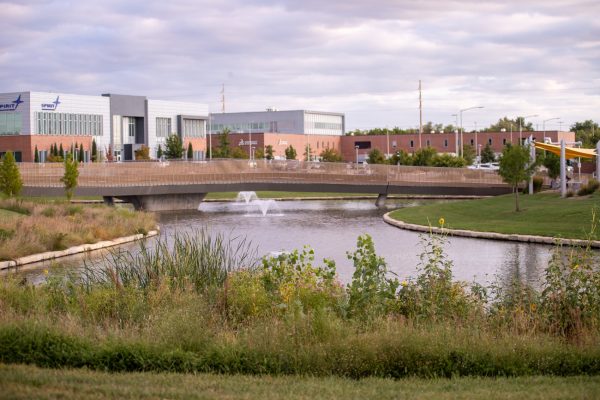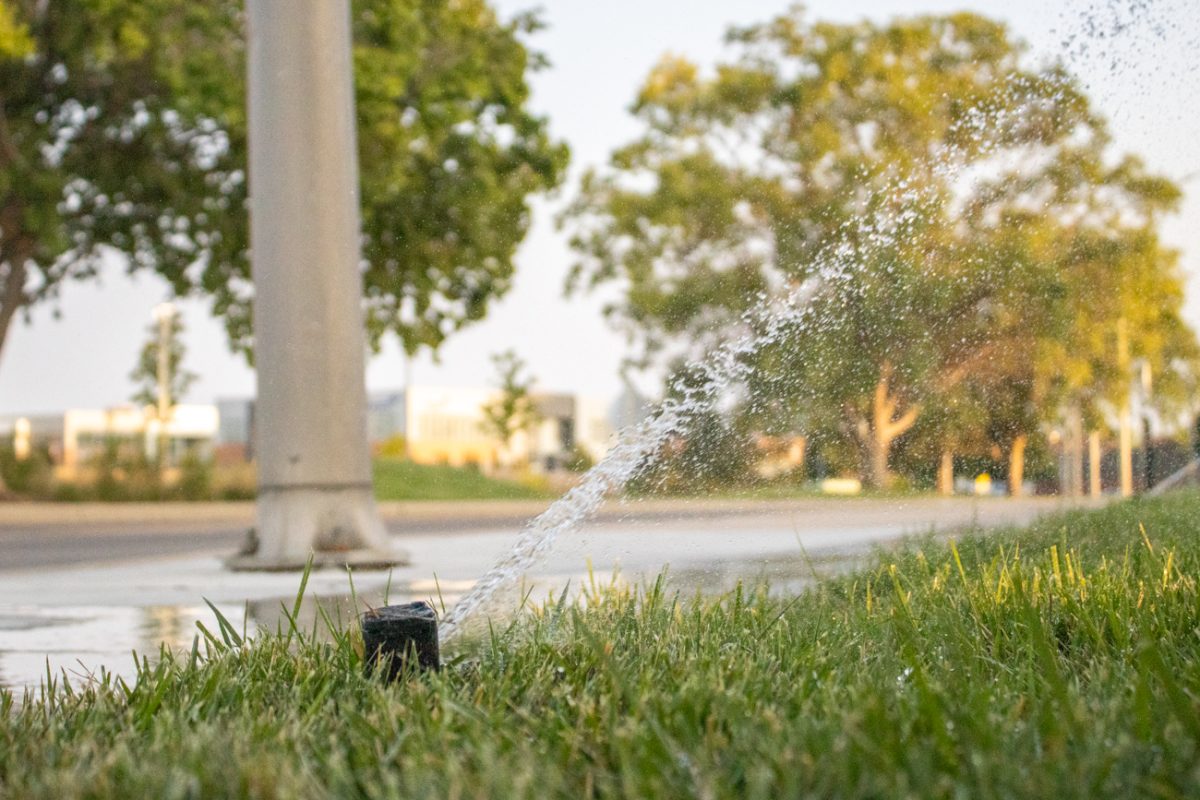Wichita has experienced drought-like conditions for more than two years. Soon, the city will be in its second month of enforcing restrictions due to severe conditions.
For Wichita State University, the drought has required some adjustments.
“It has made us change our approach in what type of plants we were planting this fall (and) what type of plants we’ll plant next spring,” said Eason Bryer, executive director of Facilities Services. “We can’t predict the future, but I don’t see this drought magically going away over a single winter.”
The city entered stage two of drought restrictions on Aug. 5, which significantly limited when residents could water outdoors. The restrictions began due to low water levels at Cheney Reservoir, Wichita’s main water source.
In his role, Bryer oversees the university’s landscaping, building maintenance and more — water plays an important role in each.
Preparing for a drought
Before the city entered stage two, residents were encouraged to reduce water voluntarily. Bryer said he and his team had been “proactive” in saving energy and water.
They did this by changing traditionally green spots into dryscape areas, opting for rocks instead of plants.
Rock gardens are more expensive at first due to the cost of the material, the labor to replace the gardens, putting down fabric and placing the rocks. Bryer stressed the long-term cost savings, though.
“We’ve converted about 80 (landscaping) beds from areas that used to require lots of fresh water, pesticide, herbicide (and) fertilizer,” he said. “Well, now those areas require nothing but to let Mother Nature take its course and rain once in a while.”
Bryer also noted the university’s transition to more native greenery.
“A good example to look at would be everything in the wild grow area in front of Woolsey (Hall). That is all native scape,” Bryer said. “Those were all plants that were selected because they thrive in our geographic area.”
Sean Wentling is the president of WSU’s Green Group, a student organization that focuses on educating people on intersectional environmentalism. He emphasized the importance of vegetation on campus.
“All the greenery, shrubbery, bushes and trees around campus provide, you know, mental health benefits, but also aesthetic benefits for the campus; it makes it look pretty, and it makes it look like a campus to which you would like to attend school,” Wentling said.

While the university was working to transition several elements in preparation for the drought, Bryer said it was “still watering on a pretty aggressive schedule,” about four to five days a week.
“So maybe a little bit more than you would in a residential situation, but even at that, not as much as most commercial settings would water,” Bryer said.
A dry spell
Since stage two restrictions began in August, Cheney Reservoir’s water levels have continued to drop, with current readings putting it at 57% full.
Wentling said that while he’s happy to see efforts have been made to reduce water usage, the situation was avoidable.
“(Several feet of) water … has been totally evaporated from the Cheney Reservoir — that’s been going on for years now,” Wentling said. “And it’s something which we could have taken into account as a community, not necessarily to reduce all of our water usage, but to bring awareness to water usage.”
With stage two fully in motion, WSU has been forced to implement different watering habits.
“So when those restrictions came, instead of us being able to nourish our plants and our grass as much as we wanted, as often as we wanted — or as much or as often as we thought was reasonable — we kind of got restricted to a narrow, 14-15-hour window once a week,” Bryer said.
Wichita State’s sprinkler system is not one cohesive whole, with many operating on different schedules due to the size of the campus.
“If we turn them all on at once, it would pull so much city water that no one in the surrounding neighborhoods would be able to get a drink or take a shower. I mean, it would just tax the system,” Bryer said.
While Bryer estimates that around 75% of the university is operating on sprinkler systems with internal clocks, a quarter of them were installed decades ago, before the technology existed.
Bryer said this is why some on campus might see sprinklers running after rainfall.
“If it rains the evening that it’s set to sprinkle, I mean, we would have to go in and completely reprogram everything and remove that operation,” he said. “And as soon as it stopped raining, we would have to reprogram it to come in and irrigate.”
Bryer also noted that, just because it rains, it doesn’t mean it lasts long enough to offer an “agricultural” or “horticultural” benefit.
What’s next?
Wichita is set to reassess restrictions on Oct. 5. The city could maintain phase two restrictions, advance to stage three or potentially remove restrictions altogether.
Bryer said he doesn’t see the drought going away any time soon but also thinks it is unlikely that restrictions will progress to stage three. In the event of stage three, though, Bryer said it would require “substantial fundamental changes” at the university.
“We would have to adjust our expectations of what we want campus to look like,” he said. “Obviously, our trees will survive. Most of our shrubs will survive. We’ll do everything we can to protect our investment … But yeah, stage three, it would require some acceptance.”





